Surprising fact: nearly 22 hours of daylight can flood Fairbanks around solstice, giving you almost a full extra day for exploring.
I plan trips around one clear window: mid‑June through mid‑July typically brings the warmest weather and the most active season. Daytime highs often sit between 60–80°F, and many summer activities run at full tilt.
I balance daylight, temperatures, and wildlife timing so you know when to chase bears, calving glaciers, or the aurora. Denali Park Road bus tours usually start around May 15, and May tends to be the driest month.
Rain risk climbs toward September, and if aurora are your goal, late August through early April — with a winter peak in February–March near Fairbanks — is ideal. For planning details and month-by-month guidance, see this planning guide.
Key Takeaways
- I recommend mid‑June to mid‑July for maximum daylight and warmest weather.
- Expect 60–80°F highs and 16–24 hours of daylight depending on latitude.
- May is driest; rain risk rises by September.
- Denali access and many tours ramp up by mid‑May.
- Northern lights are best hunted in late winter near Fairbanks.
- Plan 7 days for highlights, 10–14 for parks like Denali and coastal fjords.
How I Decide the Best Time to Visit Alaska at a Glance
My approach boils down to three things: daylight, activities, and logistics.
I start with daylight because long hours of sun determine how much you can pack into each day. In late June that can mean 19–22 hours, which changes how I plan hikes, boat trips, and wildlife viewing.
Next I match your must-do items to the season. Peak season runs June–August, and mid‑June brings the warmest conditions and the fullest activity menus statewide.
Then I weigh crowds and budget. Peak gives easiest logistics but more people. Shoulder months save money but narrow the activity list.
- Days: aim for at least 7 for highlights; 10 if you want land and sea.
- Decision flow: list must-dos, match windows, adjust for weather and availability.
- Quick signals: lodging, vehicle rentals, and tours fill fast in peak—book early.
Simple rule: decide what matters most, pick the month that delivers it, and plan around that anchor time.
The best time to visit alaska
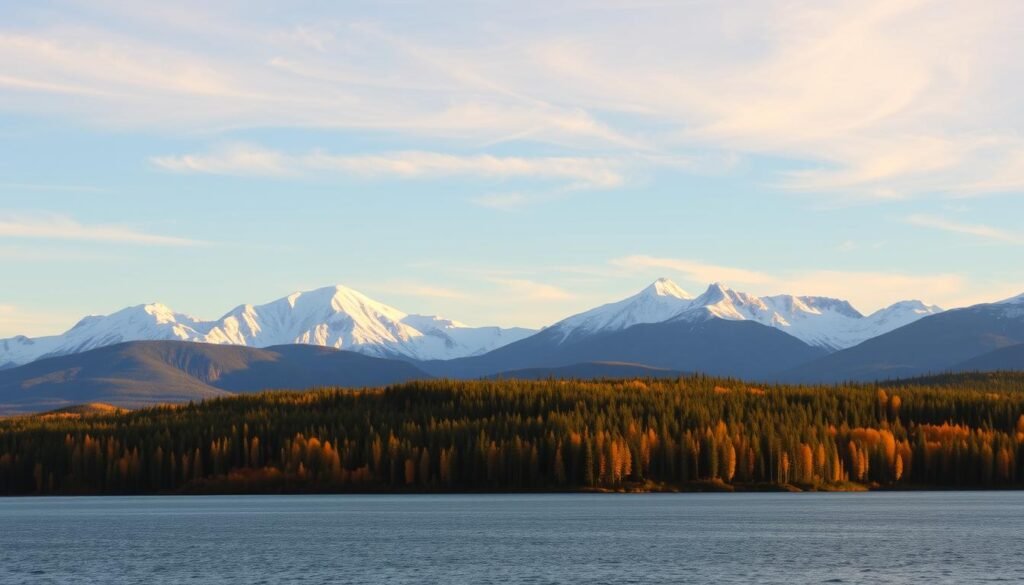
When people ask me for a single short answer, I point to the June–August stretch as the clear quick option.
Quick answer: June through August for long days, warmer temps, and abundant wildlife
June–August gives the longest daylight, the warmest temperatures, and the most tour choices. Average highs sit around 50–70°F statewide and often reach 60–80°F in popular regions. Near-constant daylight in June and July lets you pack more into each day.
My sweet spot: June 15 to July 15 for peak summer energy
My one best window is June 15–July 15. Trails, festivals, and wildlife rhythms align then. Bears, whales, and eagles are widely sighted, though exact encounters vary by region.
- Packing: breathable layers, a warm layer for cool nights, and a reliable rain shell.
- Tradeoffs: mosquitoes peak early summer and northern lights aren’t visible under bright nights.
- Booking: peak season fills fast—reserve permits, small-ship cabins, and popular excursions early.
“Plan your land-and-sea mix now so you can pivot if weather or logistics shift.”
Leave room in your itinerary for weather buffers and alternatives like museums or scenic drives. For a quintessential experience, this summer window delivers daylight, wildlife, and broad access—just plan ahead so every day counts.
Choose Your Window by What You Want to Do
Pick the months by the headline activity you want — wildlife, hiking, aurora, or quieter value trips.
Wildlife viewing and marine life
For broad wildlife viewing, aim for May–September. Humpbacks are common in fjords then, and orcas appear year-round.
July is my call for the highest chance of brown bears at salmon runs and heavy whale action. Gray whales peak during March–April migrations, so plan that if whales are your main draw.
Northern lights and lights viewing
Nights dark enough for northern lights viewing begin in late August and run through early April. For a deep aurora fix, I prefer February–March near Fairbanks when snow makes activities easier and nights are reliably long.You can learn more about best-time-to-visit-iceland
Summer adventure and hiking
Summer activities and trails open quickly: lowland routes clear by May; mountain routes are usually ready by early June. Long hours in mid-June to mid-August let you squeeze full-day hikes and glacier treks into one trip.
Value travel in shoulder months
May and September offer quieter places and 10–25% discounts on many hotels, tours, and cruises. You may face thinner activity menus, but you gain lower prices, fewer people, and still solid wildlife and scenic chances.
“Match your goals with the season, then layer availability and budget so your plan delivers the experience you want.”
- I map family-friendly versus expert-level options so you can right-size risk and effort.
- I recommend backup plans—scenic flights, museums, or tidewater glacier cruises—because wildlife is never guaranteed.
- Remember how daylight and darkness shape photography: auroras need true night, while midnight sun hours create golden light near 11 PM.
Seasons in Alaska: What I Weigh for Weather, Daylight, and Crowds
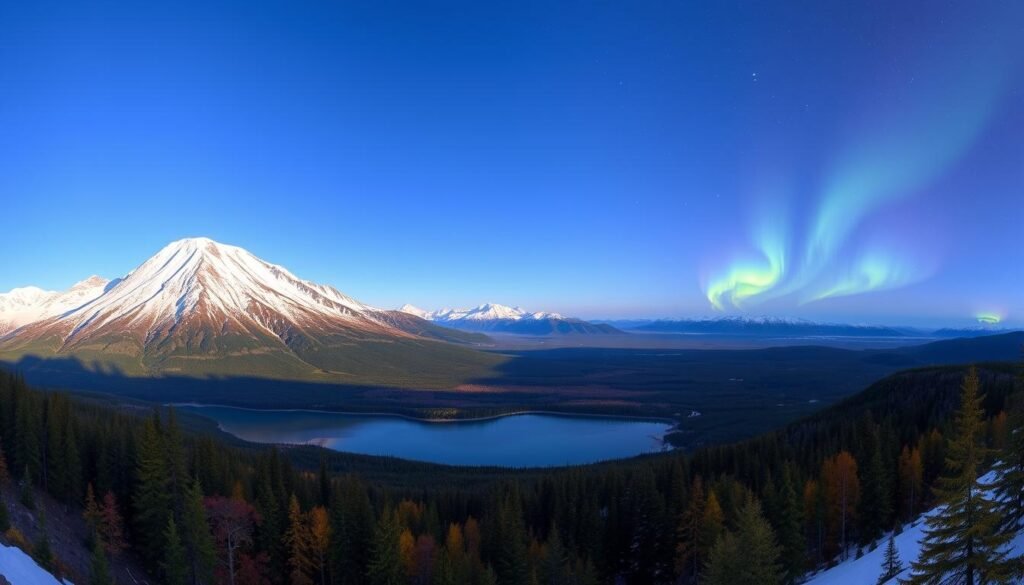
I weigh season shifts by how they change weather, daylight, and crowds across the year. Below I break each season so you can match goals, conditions, and budget without guesswork.
Summer (May–September)
Summer brings daytime highs around 60–80°F and very long daylight. Around June 21 Anchorage sees about 19 hours, southeast coastal towns about 18, and Fairbanks up to 22.
Peak season concentrates activities, tours, and easy logistics. May is often the driest month, with rain chances rising by September and mosquitoes tapering by early August.You can learn more about best-time-to-visit-costa-rica
Shoulder months (May, September)
Shoulder months offer value and fewer people. Expect roughly 10–25% discounts on lodging and tours, lighter bugs by September, but more variable rain and some paused services.
For planning details and a month-by-month look, see this season guide.
Winter (November–March)
Winter favors the northern lights, snow sports, and festivals. Nights are long and dark for aurora viewing, while March offers 12–15 hours of daylight and events like the Iditarod kickoff.
Spring and fall transitions
April is a hybrid: gray whale day cruises run from Seward, some crust-skiing persists, and aurora can still appear until about April 20. October feels quieter and unique—great for solitude but not for classic summer activities.
“Align your must-dos with the season where they thrive, then pick specific weeks that match weather and crowd patterns.”
- I map how season and conditions affect national park access and services so you can plan reservations.
- I quantify temperatures, daylight, and trail readiness so expectations match reality.
- I summarize tradeoffs so you can pick the season that fits your goals without second-guessing.
Month-by-Month Planning to Visit Alaska
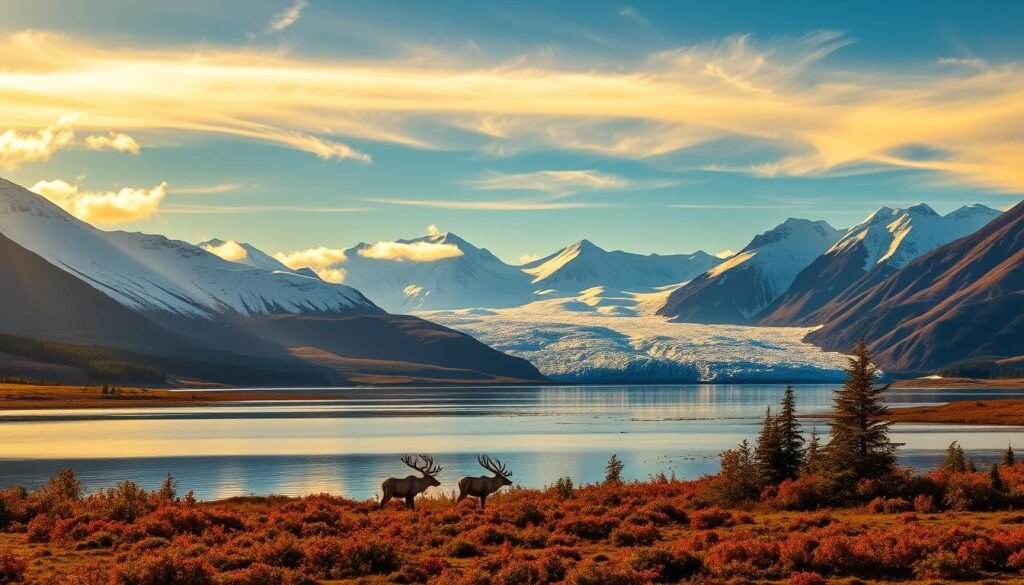
I walk through each month so you know which adventures, tours, and conditions line up for your trip.
May
May offers early-season savings and the driest skies. Lowland trails clear and many places discount lodging and tours.
Denali national park bus service typically begins around May 15, so you can reach interior routes sooner than you expect.
June
June brings the longest days and wide access to summer activities. Mountain routes usually open by early June, expanding hiking and flightseeing options.You can learn more about best-time-to-visit-yellowstone
July
July is peak warmth and top wildlife viewing. Bear sightings and whale-rich cruises line up, and mosquitoes generally taper by early August.
August
Mid-August marks the return of darkness and the first real chances for northern lights. Late-summer adventures still feel like summer while colors begin shifting.
September
September is a shoulder window: fall colors, fewer crowds, and renewed aurora activity. Tours run with smaller groups and quieter ports.
March–April notes
March is ideal for winter trips—good snow, long days, and events like the Iditarod. April opens Seward day cruises for gray whales and offers last-chance lights viewing through about April 20.
| Month | Highlights | Key tours & access | Chance of northern lights |
|---|---|---|---|
| May | Driest skies, savings | Denali buses start (~May 15), lowland hikes | Low |
| June | Longest days, full summer activities | Flightseeing, glacier hikes, boating | Very low |
| July | Top wildlife, warmest | Whale cruises, bear viewing tours | Low |
| Aug–Sept | Late-summer, fall colors, aurora return | Day cruises, guided hikes, smaller-group tours | Rises after mid-August |
“I map months to what’s open and what shines that week so you can lock your plan with confidence.”
Cruising Alaska: When I Sail and Why It Matters
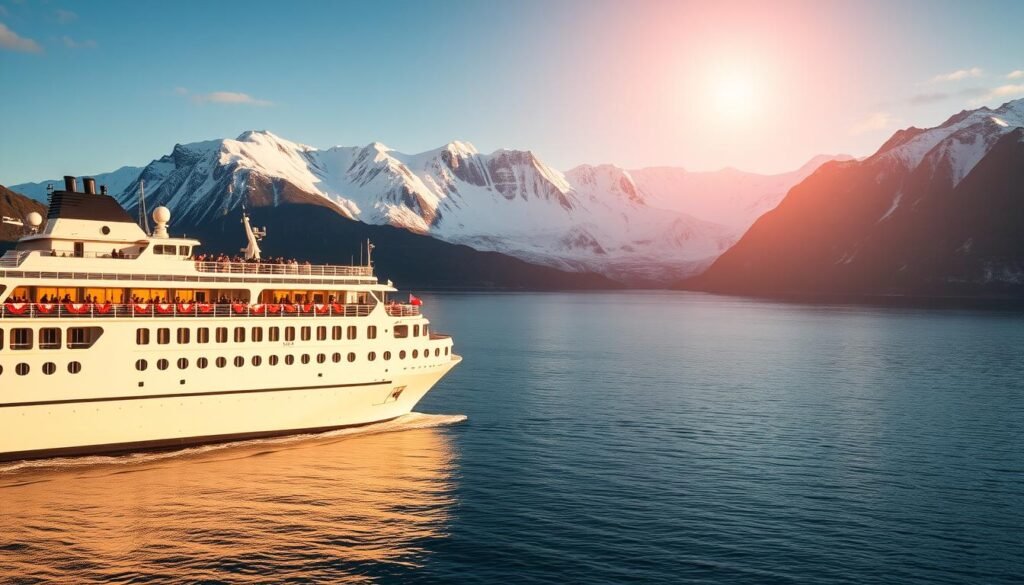
I plan cruises by matching wildlife rhythms, glacier activity, and how much shore time I can book.
Season window: Cruise season runs May–September, and a few small ships start as early as mid‑April. Summer and peak season bring the fullest schedules, the richest wildlife viewing, and dramatic glacier calving in Glacier Bay National and the Inside Passage.
Why I choose mid-summer within peak season
Mid-summer gives the best odds for whales, bears, and tidewater glaciers actively calving. Small-ship routes in particular access quiet coves that larger vessels can’t reach, so photo moments feel more intimate.You can learn more about best-time-to-visit-italy
How I shape an itinerary
- I favor sailings with frequent off-ship options—kayaks, skiffs, and guided hikes—because these places reward immersion.
- I book early for permits and berths in Glacier Bay National and other national park waters.
- I compare one-way versus roundtrip routes so land extensions to Denali or Kenai fit without blowing the trip timeline.
Practical advice: pick a cabin for comfort in wind and spray, pack a warm, waterproof layer, and read daily programs closely. If a line emphasizes wildlife viewing and shore time, that’s the signal you chose well.
“Summer cruises shine for wildlife and glaciers; northern lights are best left for separate winter trips.”
Timing Alaska’s National Parks and Wild Places
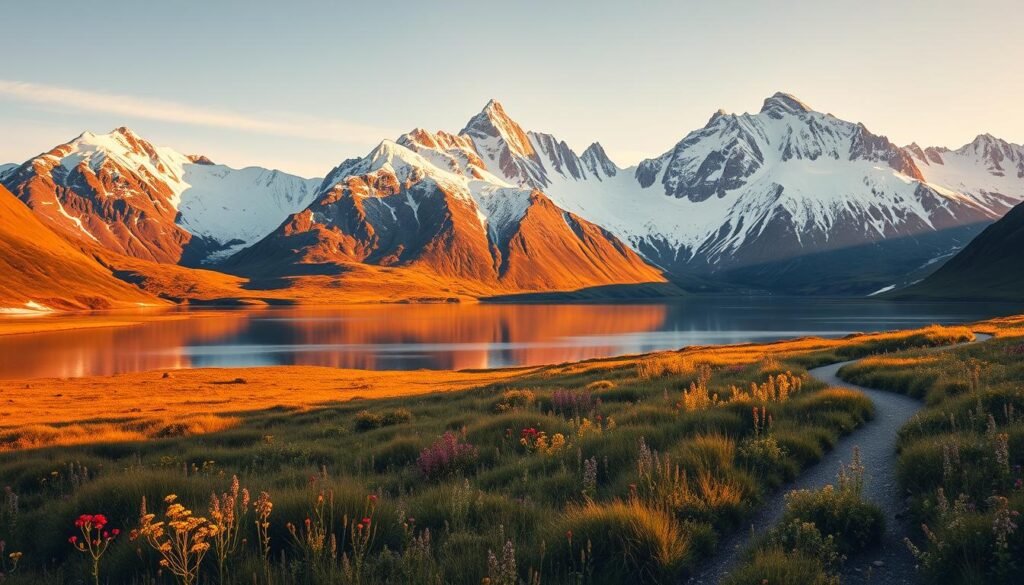
I map park windows by access and wildlife rhythms so you know which areas will actually be open.
Denali national park needs summer for full access. Park buses usually begin around mid‑May, so interior routes and multi‑day land extensions fit well if you have two weeks.
Glacier Bay and small‑ship corridors
Glacier Bay national draws small ships in summer for dramatic glacier calving and whale encounters. Permits fill quickly, so reserve entry slots and guided outings early.
Kenai Fjords and marine terrain
Kenai Fjords shines with summer day cruises to tidewater glaciers and marine wildlife. In winter, niche snow-based tours offer a very different land and sea feel.
Katmai & Brooks Falls
Katmai’s Brooks Falls peaks in July for brown bear salmon runs. Fly‑in logistics are limited; I book platforms and floatplane seats as soon as dates lock.
“Match park goals with the season, then build buffers around scenic flights and remote lodges.”
| Park | Peak access window | Signature wildlife | Booking note |
|---|---|---|---|
| Denali national park | Mid‑May – Aug | Caribou, bears, tundra vistas | Reserve buses and lodges early |
| Glacier Bay national | June – Aug | Glacier calving, humpbacks | Small-ship permits required |
| Kenai Fjords | June – Sept (summer) | Sea otters, whales, tidewater glaciers | Day cruises book fast |
| Katmai (Brooks Falls) | July | Brown bears at salmon runs | Fly‑in seats limited—reserve early |
- I suggest pairing Denali + Kenai Fjords for mountain, glacier, and marine balance.
- Build extra days around weather-sensitive flights and remote transfers.
- Late June–August gives the most consistent access for these national park places.
Weather, Daylight, and Conditions I Plan Around
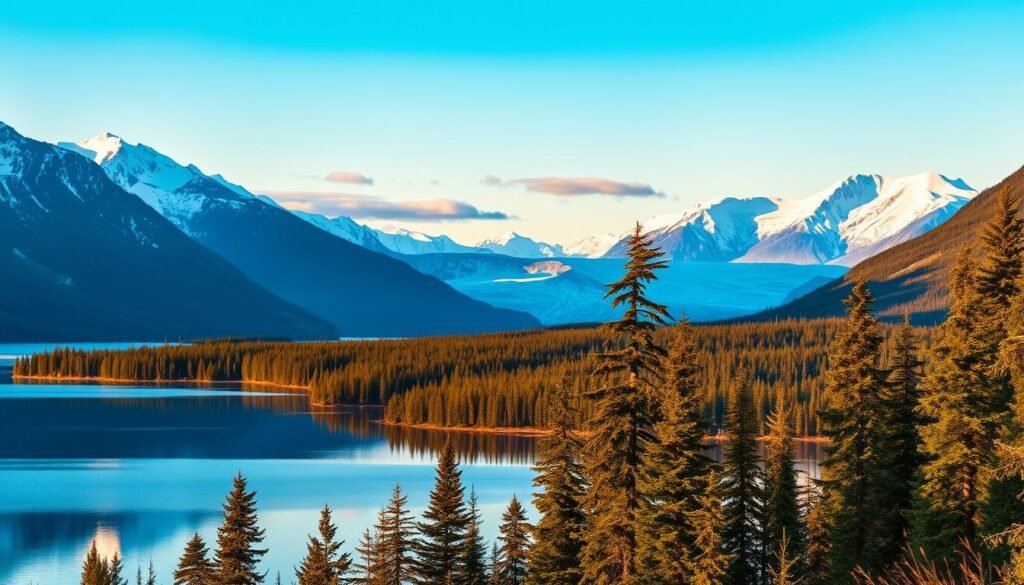
My planning centers on how seasonal conditions shape each day. I use simple rules so weather and light don’t upend plans.
Temperatures and rain
Expect summer highs near 60–80°F once mid‑June arrives. May is often the driest month, while rain chances climb toward September.
Pack breathable layers and a waterproof shell so you can adapt when maritime weather shifts.
Daylight reality
Around June 21, daylight can reach roughly 19–22 hours depending on location. Those long days let you fit more activities into a few days.
True darkness returns by late August, which matters if you are chasing aurora or want classic night skies.
Trail and land conditions
Lowland trails usually clear by May; alpine routes and many mountains open by early June. Near the Arctic, some high passes wait until late June.
I build realistic buffers for weather delays, especially for flightseeing and glacier cruises that are wind- or fog-sensitive.
- I translate these patterns into packing and scheduling choices so each time block is useful.
- Remember that long transfers across big national park landscapes add time—factor buses and ferries into daily plans.
- Microclimates mean fjords, coasts, and mountains can vary on the same day; stay flexible with sequencing.
“Build your plan around conditions, not just dates, and you’ll get more from every day.”
My best time tip: check sunrise/sunset calendars for your exact dates so you can slot sunrise hikes or late golden-hour drives that make the trip sing.
Budget-Savvy Timing and Peak vs. Shoulder Strategy
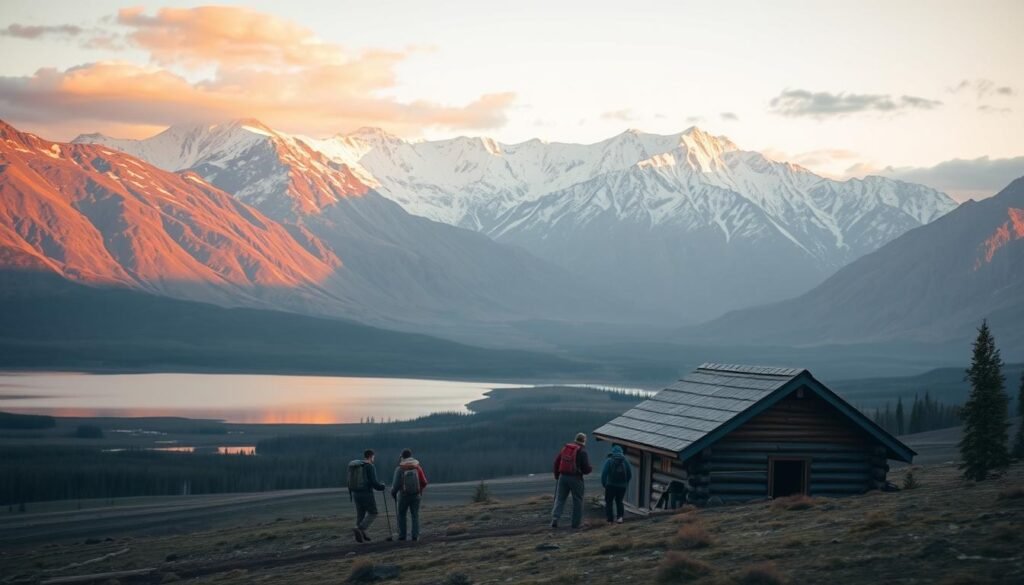
I plan trips by pairing anchor experiences with the months that cost less. That approach keeps the trip strong while trimming unnecessary spend.
Peak season (June–August) delivers the fullest activity menus and steady weather. Book early for car rentals, cabins, and guided tours or you’ll face limited options and higher rates.
Shoulder savings (May, September)
May and September often cut 10–25% off hotels, tours, and cruises. Many signature tours still run, so you can snag iconic experiences at lower cost.
Cheapest periods (late fall–winter)
Airfare and lodging dip in late fall and winter. Summer-focused products pause, but winter is prime for the northern lights and lower rates if you accept fewer marine options.
- Anchor days first: lock Glacier Bay permits or Denali buses, then fill other days.
- Mix a short cruise with land nights for value—pick lines that prioritize off-boat exploration.
- Use flexible date searches and midweek travel to shave fares.
| Window | Cost signal | What runs | Booking tip |
|---|---|---|---|
| Peak (Jun–Aug) | High | Full tours, cruises, park access | Book 3–6 months ahead |
| Shoulder (May, Sep) | Moderate | Many tours, quieter ports | Look for 10–25% discounts |
| Late fall–Winter | Low | Limited summer tours; aurora trips | Flexible dates save most |
“Define what you won’t compromise on, then pick the month that hits those must-dos at the right price.”
How Many Days I Recommend for Visiting Alaska
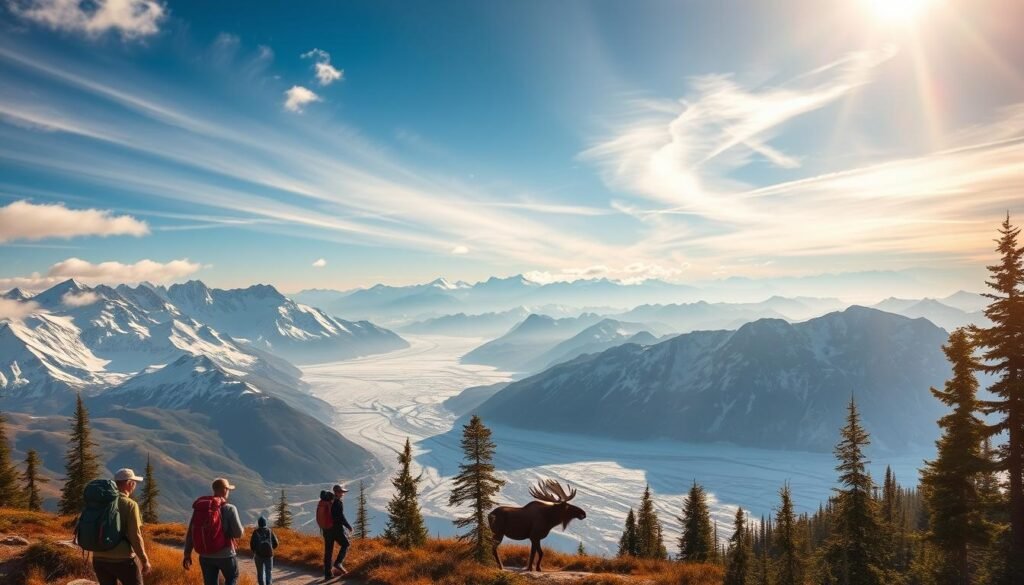
I design itineraries by stacking land days and cruise nights so travel feels smooth. For most readers who want a full-flavor experience, I recommend 7–10 days if you plan to visit alaska.
Seven to ten days blends a short small-ship cruise with 3–4 land nights. That ratio gives marine wildlife opportunities and time on trails without rushed transfers.
First-timers: 7-10 days for a balanced land-and-sea experience
If you wonder how many days need, aim for a 4–6 night cruise plus 3–4 land nights, or a 10-day land circuit if you skip sailing. A cruise often yields more wildlife sightings in one week than most travelers see in years.
Two-week upgrade: Add Denali, Fairbanks, or the Kenai Peninsula
With 14 days you can add Denali National Park, Fairbanks, or the Kenai Peninsula and slow the pace. Many days need scales up comfortably in two weeks, letting you layer scenic flights, tundra hikes, and longer photo windows.
I advise reserving bus seats for Denali early, planning buffer days for weather, and staggering big-ticket activities so you don’t overpack a single day. Prioritize keystone experiences first, then fill the rest so your trip keeps momentum and energy.
My one best planning rule: lock the keystone experiences first, then build around them so every day counts.
Conclusion
I close by distilling the windows that match what you actually want to do on the ground.
For a classic run of long days and full summer activities, aim for mid‑June through mid‑July. That window packs hiking, flightseeing, day cruises, and steady wildlife viewing into each day.
If aurora are your goal, plan late August through early April with winter months — especially February–March — for peak northern lights viewing. Shoulder months like May and September give lower crowds and better prices.
Final practical notes: anchor a national park (Denali or Kenai), consider Glacier Bay if you cruise, book keystone spots early, pack layers, and leave weather buffers so your month visit alaska goes smoothly.


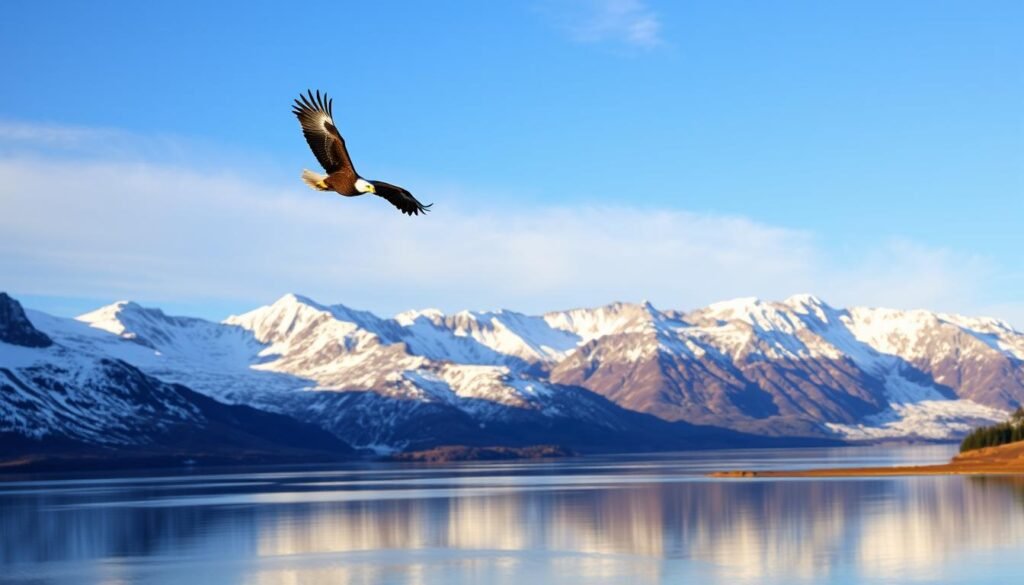



















One Response